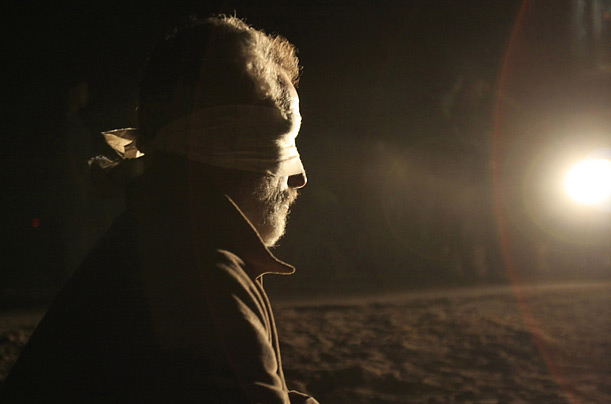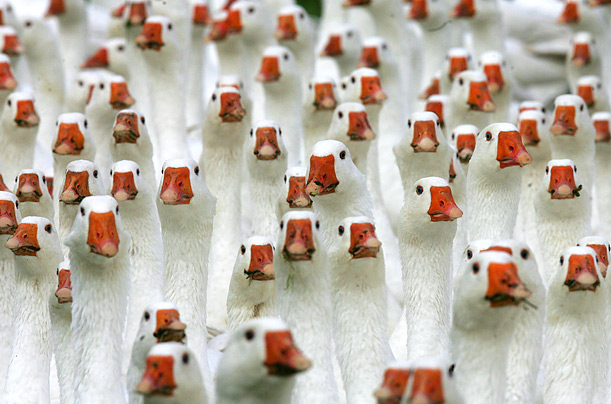1. Captions
a. First sentence includes major information about the photo (who, what, where, when, why, how). You may make up the information for this assignment.
b. First sentence should be written in present tense as if the action of the photo is still happening.
c. Second sentence should be past tense, and should include background information.
d. Information in caption should not be obvious by looking at the photo.
e. If there are three or fewer recognizable people in the photo, you must give all of their names (you can make them up for this assignment).
f. Use strong action verbs whenever possible.
 |
| Mat Damond sits blindfolded in a desert in Syria before he is murdered my members of ISIS. He is being murdered because he is Jewish and is not like his other Muslim peers. |
 |
Eurasian geese with distinct red orange noses and white feathers are gathered together in a great mass. These geese gather together as they travel south for the winter to try and escape the cold.2. Rules of Photography
a. Rule of thirds - aligns the subject along one of the intersects of a three by three grid.
b. Balancing Elements - the effect of the subjects and things in the picture outweighing each other so that the picture seems even and balanced.
c. Leading Lines - the eye of the viewer is lead to the subject by lines in the photo.
d. Symmetry and Patterns (repetition) - photos that contain repetitive patterns and show visual rhythm and satisfaction and interest.
e. Viewpoint - the position from which the photo is taken or the subject(s) position in the photograph.
f. Background - the area of space behind of the subject.
g. Create depth - done by including objects in the foreground, background, and middle ground.
h. Framing - the framing of the subject with the surroundings not a literal frame.
i. Cropping - the subject of a part of the picture is zoomed in on.
j. Mergers and avoiding them - awkward placements of subjects with the surroundings.
3. Aperture, Shutter speed, and ISOAperture - the unit of measurement that defines the size of the opening in the lens that can be adjusted to control the amount of light reaching the film or digital sensorShutter speed - the length of time when the film in a camera is exposed to light.
ISO - used when there is not as much light.
4. Photoshop
What is acceptable: Leveling and cropping of the photo
5. Portraits Environmental portrait - taken in the subject's usual environment. Self portrait - taken of a single subject with a set up. Casual portrait - a photo taken of a single subject 6. Photogaphic Terms Exposure: the amount of light per unit area in a photo Depth of Field: the distance between the nearest and furthest objects that give an image judged to be in focus in a camera. Focal length: the distance between the center of a lens and its focus 7. Magazine Covers Early magazine covers: consisted of a title, author, and occasionally a small illustration without relation to the content of the magazine. Poster magazine covers: consisted of a large image lacking relation to the magazine taking up the whole cover leaving some space for the magazine title. Married to Type magazine covers: consists of a general image in the center of the cover and the title as well as article names intended to draw the reader in along the sides of the image with matching font and colors. Forest of Words magazine covers: obnoxious "shouting" text covering the cover with articles and their summaries as well as an image hidden behind the text and a title. |
No comments:
Post a Comment